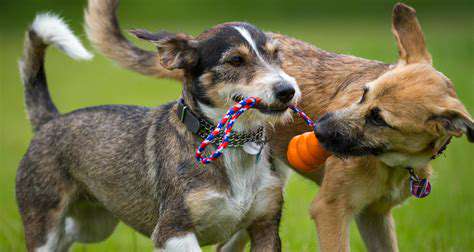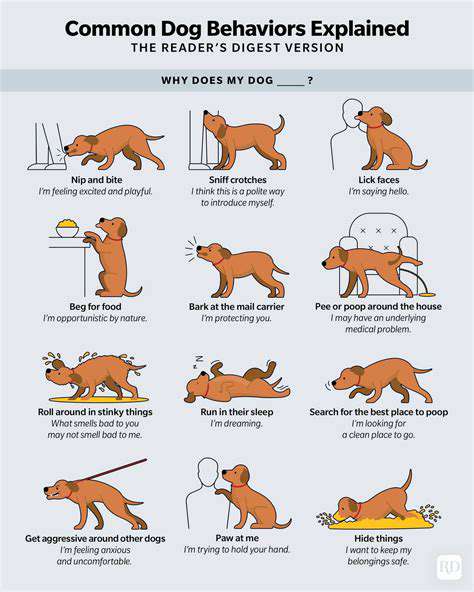How to Socialize Your Kitten
Introducing Other Animals
Begin interspecies introductions through scent swapping before visual contact. Rub a cloth on resident pets and place it near the kitten's feeding area to build positive associations through mealtime pairing. First face-to-face meetings should occur through baby gates or screen doors, allowing safe investigation. Watch for reciprocal curiosity rather than forced tolerance before progressing to shared spaces.
Consistency and Patience
Develop a socialization checklist tracking exposure to various stimuli, noting dates and reactions. Aim for brief but frequent sessions (5-10 minutes) several times daily rather than prolonged exposures. If setbacks occur, return to the last successful interaction level and rebuild gradually. Document progress to identify patterns and tailor future sessions accordingly.
Introducing Your Kitten to Different Stimuli
Introducing Your Kitten to Different Sounds
Create an auditory enrichment program starting with white noise machines set to nature sounds. Progress to recorded household noises (blenders, doorbells) played at low volumes during feeding times. Always pair new sounds with positive experiences like meals or play sessions. For urban kittens, gradually introduce traffic recordings starting at 50dB and slowly increasing volume over weeks.
Introducing Your Kitten to Different Textures
Design a texture walkway using interchangeable panels: corrugated cardboard, faux fur, rubber mats, and ceramic tiles. Sprinkle treats along the path to encourage exploration. Paw sensitivity decreases with regular exposure, so include slightly uneven surfaces like textured rugs to promote proprioceptive development.
Introducing Your Kitten to Different Smells
Use scent jars containing cotton swabs infused with various odors (citrus, lavender, leather). Present one scent daily during playtime, rotating through twenty different aromas monthly. Associate unfamiliar scents with high-value rewards to build positive connections. Avoid overwhelming with multiple new scents simultaneously.
Introducing Your Kitten to Different Environments
Practice the room of the day concept, dedicating each day to exploring one new area of your home. Place familiar bedding and toys in each new location to provide continuity. For outdoor acclimation, begin with secured patio time in a kitten tent before progressing to harness training.
Introducing Your Kitten to Different People
Implement a visitor protocol where guests ignore the kitten initially, allowing the feline to initiate contact. Provide visitors with special treats to offer when the kitten approaches. Children should be taught the three finger rule - petting with just three fingers to prevent overstimulation.
Introducing Your Kitten to Different Animals
For multi-pet households, establish scent exchange routines before visual introductions. Feed animals on opposite sides of closed doors to create positive associations. First supervised meetings should occur after meal times when all animals are relaxed but not food-focused.
Introducing Your Kitten to Different Objects
Create an object of the week program featuring household items like umbrellas, brooms, or laundry baskets. Present each item passively before incorporating it into play. Desensitize to grooming tools early by leaving brushes near sleeping areas and rewarding any investigation.


Managing Potential Challenges
Establishing a Safe Space
Design retreat spaces with multiple access points to prevent cornering. Ideal sanctuaries include covered beds with removable tops for easy access and vertical spaces like cat trees. Rotate bedding between safe spaces to maintain familiar scent markers throughout your home.
Introducing Controlled Encounters
Implement the three steps forward, two steps back approach - after successful exposures, briefly return to easier stimuli before progressing further. Always end sessions on a positive note, even if it means concluding earlier than planned.
Positive Reinforcement Training
Use a marker system (clicker or verbal cue) to precisely identify desired behaviors. Vary reward types between treats, play, and affection to maintain engagement. Keep training sessions under five minutes to match kitten attention spans.
Addressing Fear and Anxiety
Recognize subtle stress signals like ear twitching or whisker positioning. Counter-condition fearful responses by presenting the stimulus at sub-threshold levels while providing high-value rewards.
Introducing Other Pets
Establish visual access points like mesh barriers before full introductions. Monitor for soft eyes and relaxed postures as indicators of readiness for closer interaction.
Socializing with Humans
Teach handling exercises by briefly touching paws, ears, and mouth daily while offering rewards. Practice vet visit simulations including gentle restraint and mock examinations.
Managing Outdoor Encounters
Begin outdoor exposure through window perches with visual access to the outside world. Use pheromone sprays on harnesses before venturing outdoors to promote calmness. Always have an escape route planned for unexpected encounters.










